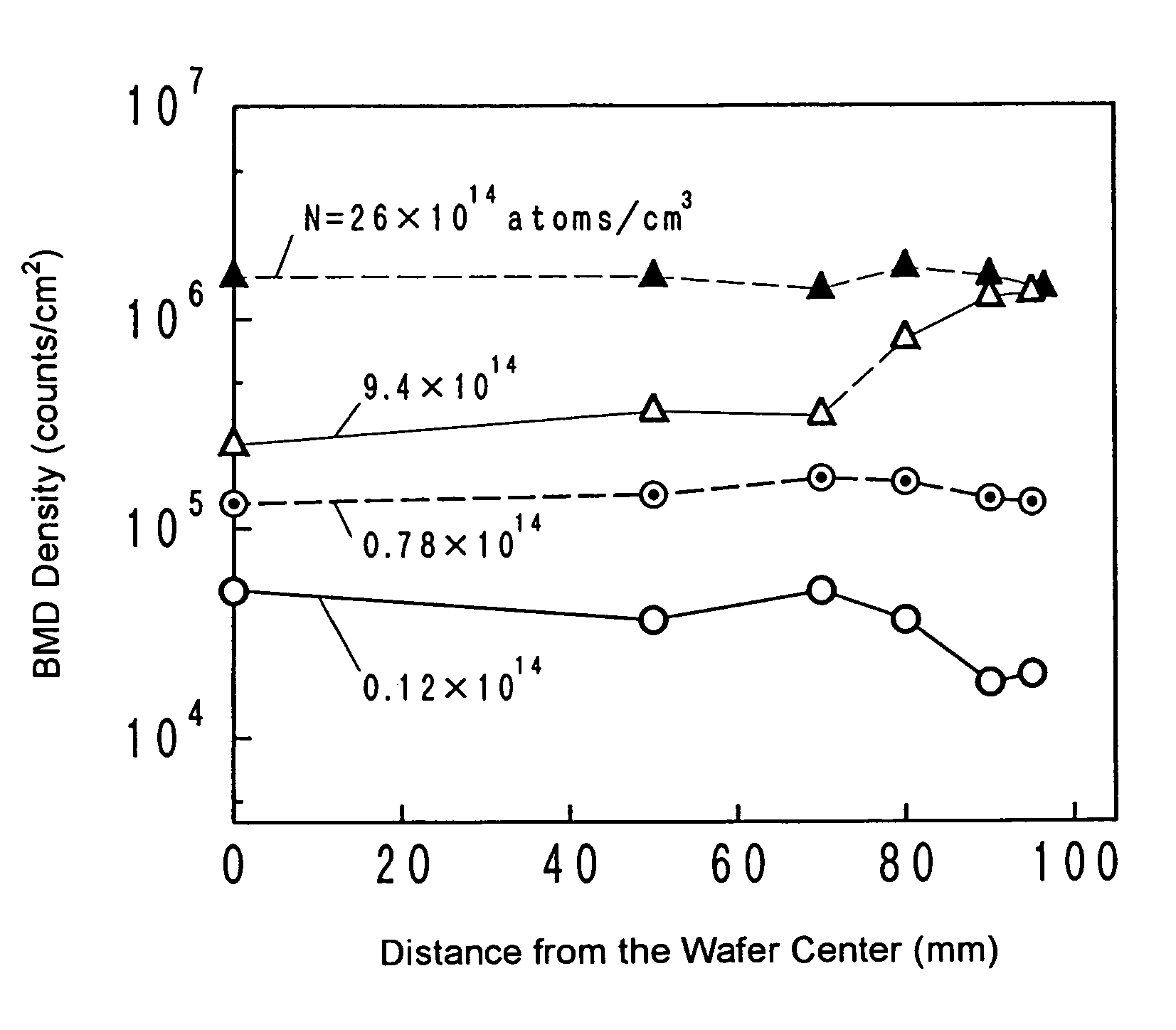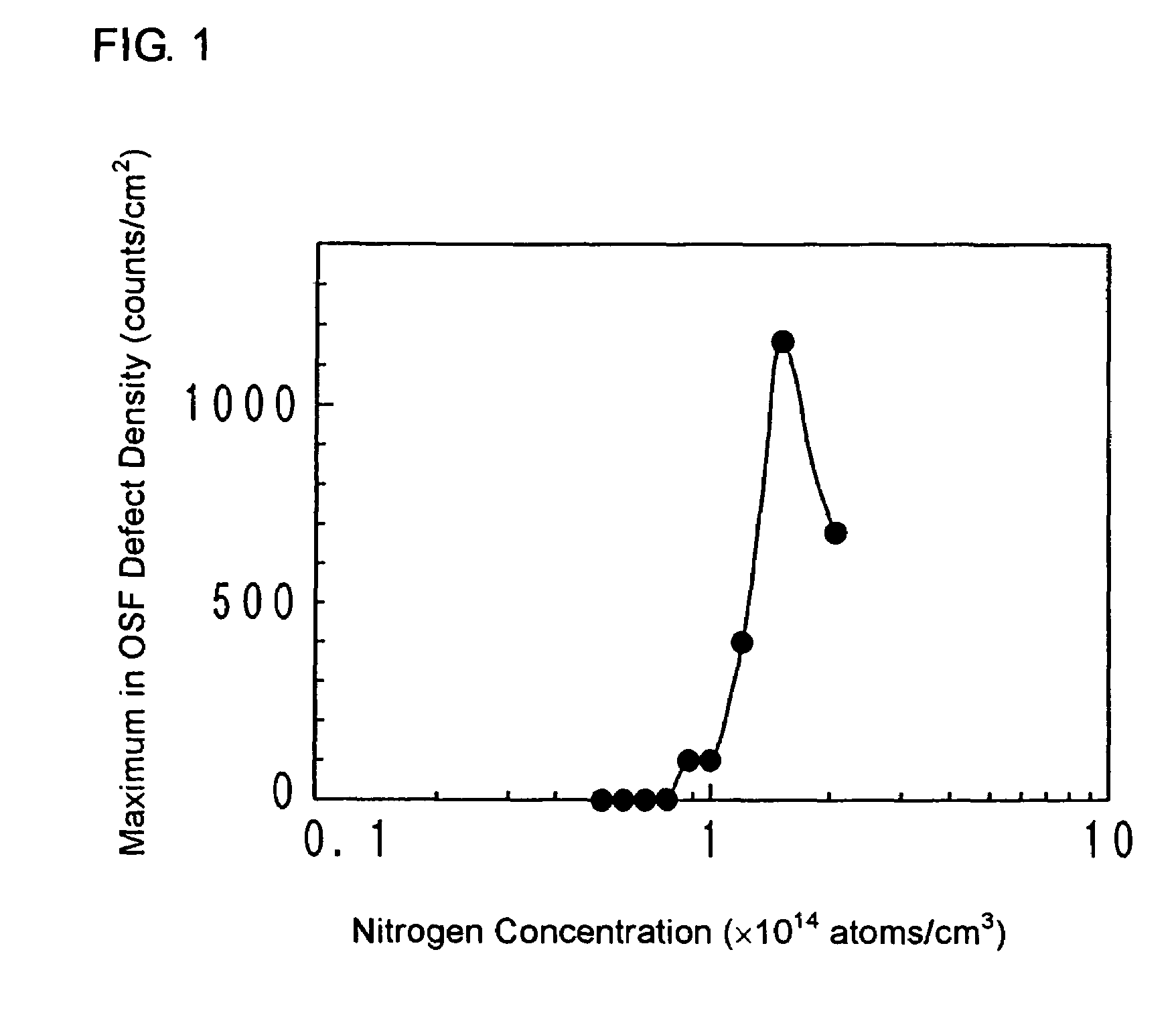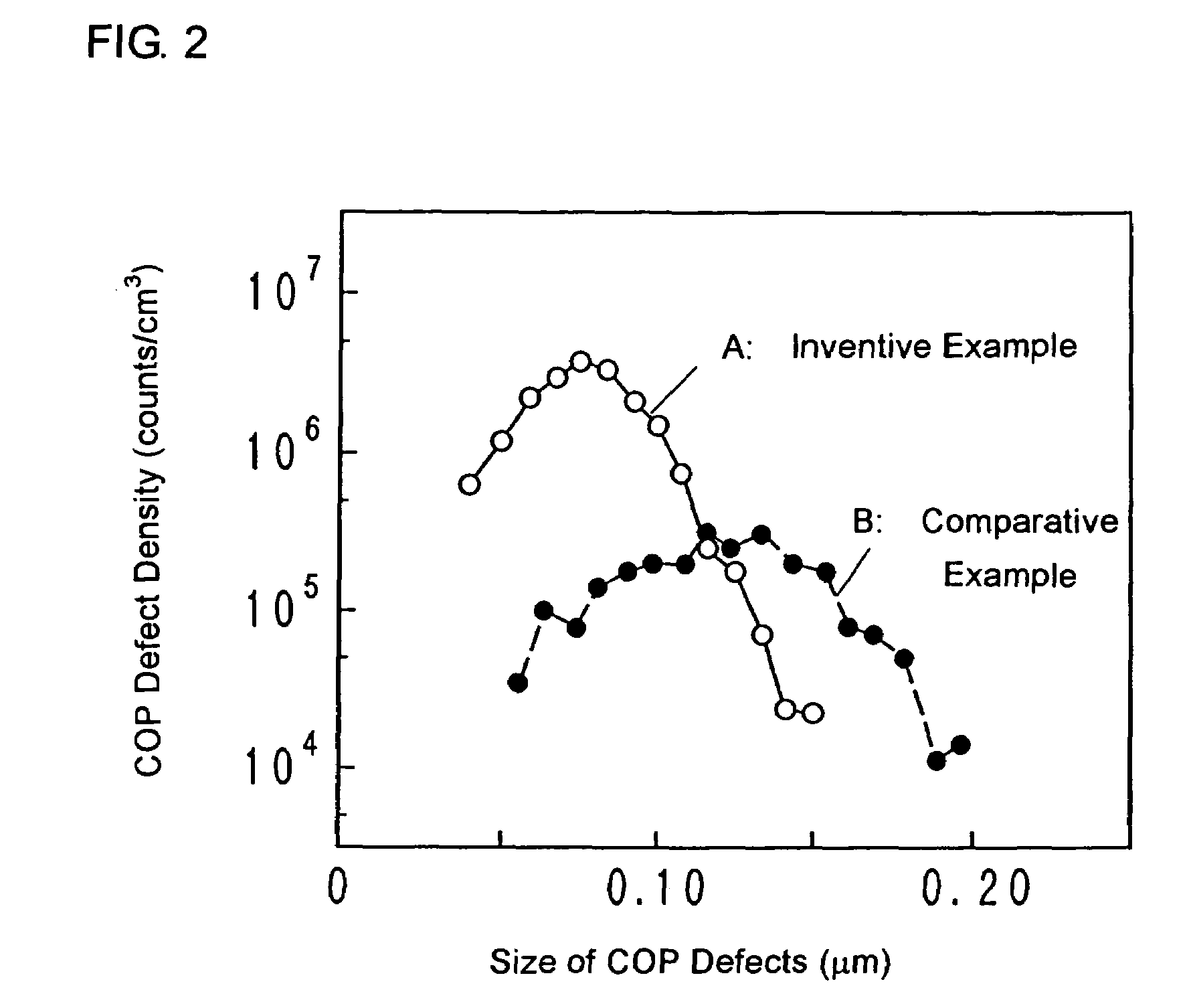Silicon annealed wafer and silicon epitaxial wafer
a technology of silicon epitaxial wafers and annealing wafers, which is applied in the direction of after-treatment details, silicon compounds, transportation and packaging, etc., can solve the problems of deterioration of device characteristics, increase of production costs, and inability to remove such cop defects from the wafers, so as to reduce the size of cop defects, reduce the effect of pass time and suppress the occurrence of large cop defects
- Summary
- Abstract
- Description
- Claims
- Application Information
AI Technical Summary
Benefits of technology
Problems solved by technology
Method used
Image
Examples
examples
[0093]Utilizing a Czochralski furnace capable of varying the cooling conditions in the hot zone, a p-type silicon single crystal having a diameter of 200 mm, a resistivity of 10 Ωcm and an oxygen concentration of approximately 14×1017 atoms / cm3 was grown, varying the following parameters in the growth conditions: the nitrogen doping concentration; the temperature gradient ratio Gc / Ge at a temperature range from 1370° C.-1310° C.; the pass time from 1200° C. to 1000° C.; and the pass time from 1030° C. to 920° C. The conditions for growing a single crystal in trial are listed in Table 1.
[0094]Each grown single crystal was sliced into disk-shaped test pieces. These test pieces were subjected to a heat treatment at 650° C. for 30 min in a nitrogen gas atmosphere, and then wafers were produced from the test pieces. The following characteristics were determined by measurements for each of the test specimens: The size and distribution of COP defects; the BMD density distribution; and the ...
PUM
| Property | Measurement | Unit |
|---|---|---|
| thickness | aaaaa | aaaaa |
| size | aaaaa | aaaaa |
| size | aaaaa | aaaaa |
Abstract
Description
Claims
Application Information
 Login to View More
Login to View More - R&D
- Intellectual Property
- Life Sciences
- Materials
- Tech Scout
- Unparalleled Data Quality
- Higher Quality Content
- 60% Fewer Hallucinations
Browse by: Latest US Patents, China's latest patents, Technical Efficacy Thesaurus, Application Domain, Technology Topic, Popular Technical Reports.
© 2025 PatSnap. All rights reserved.Legal|Privacy policy|Modern Slavery Act Transparency Statement|Sitemap|About US| Contact US: help@patsnap.com



